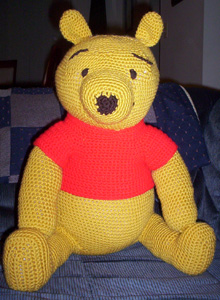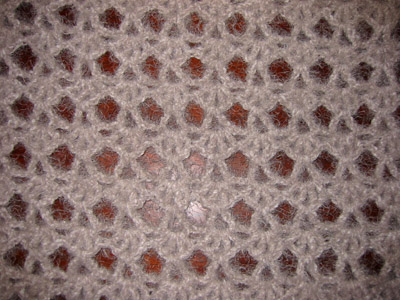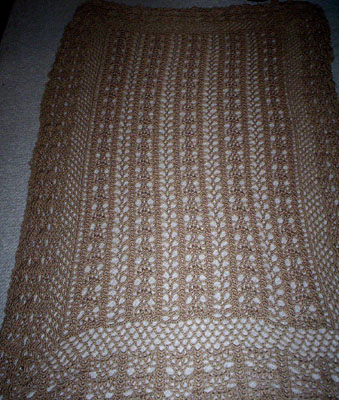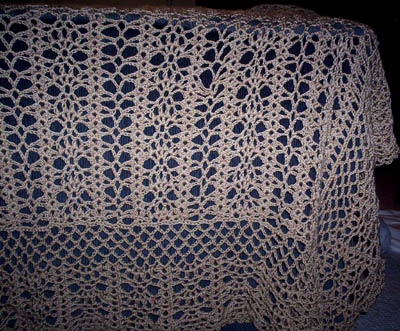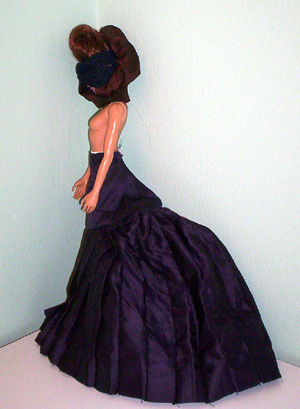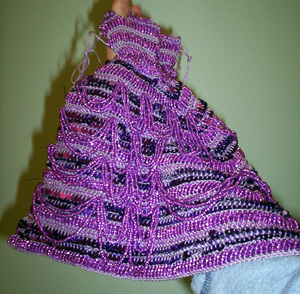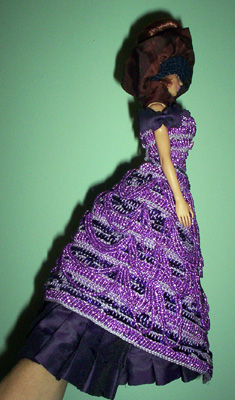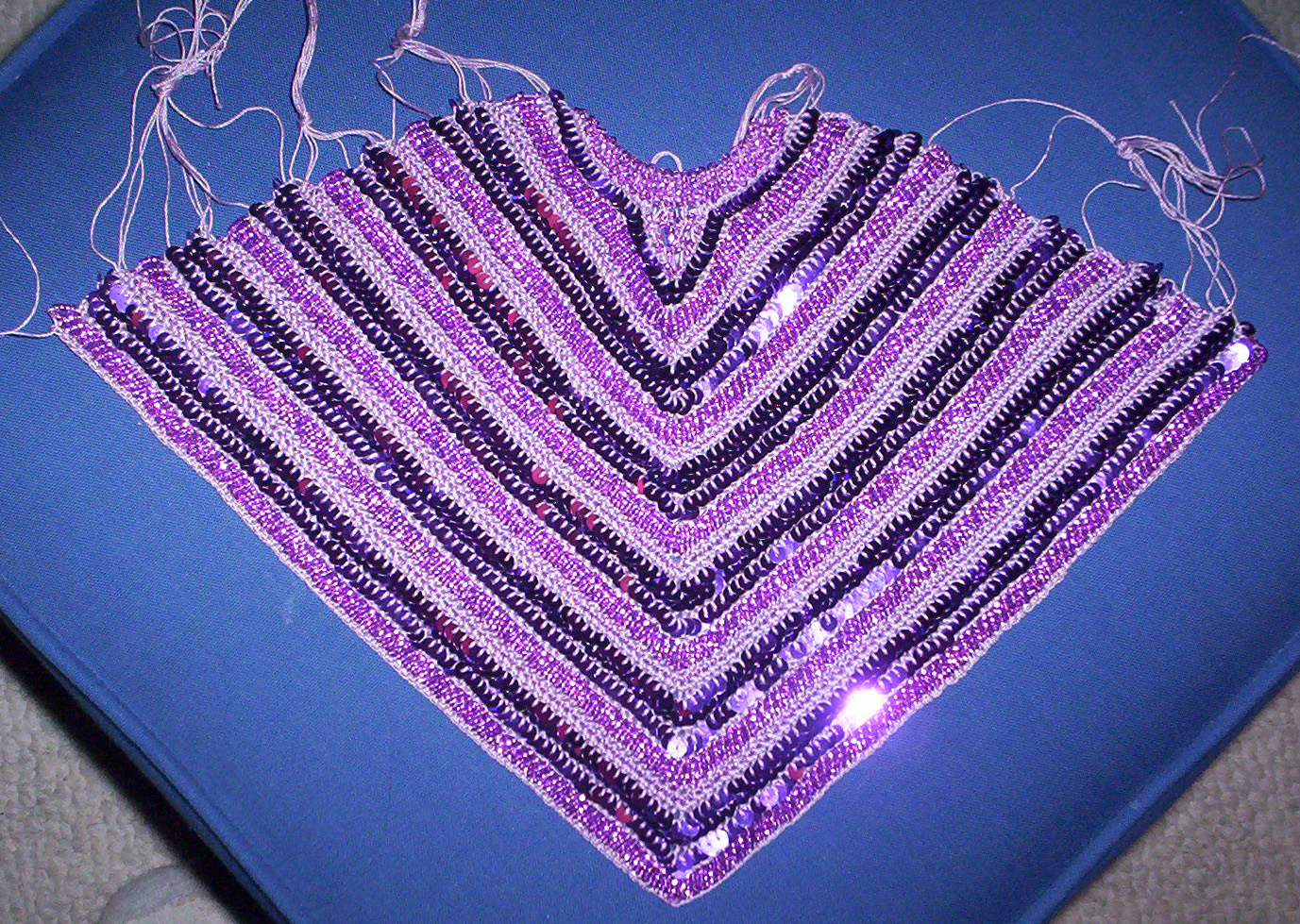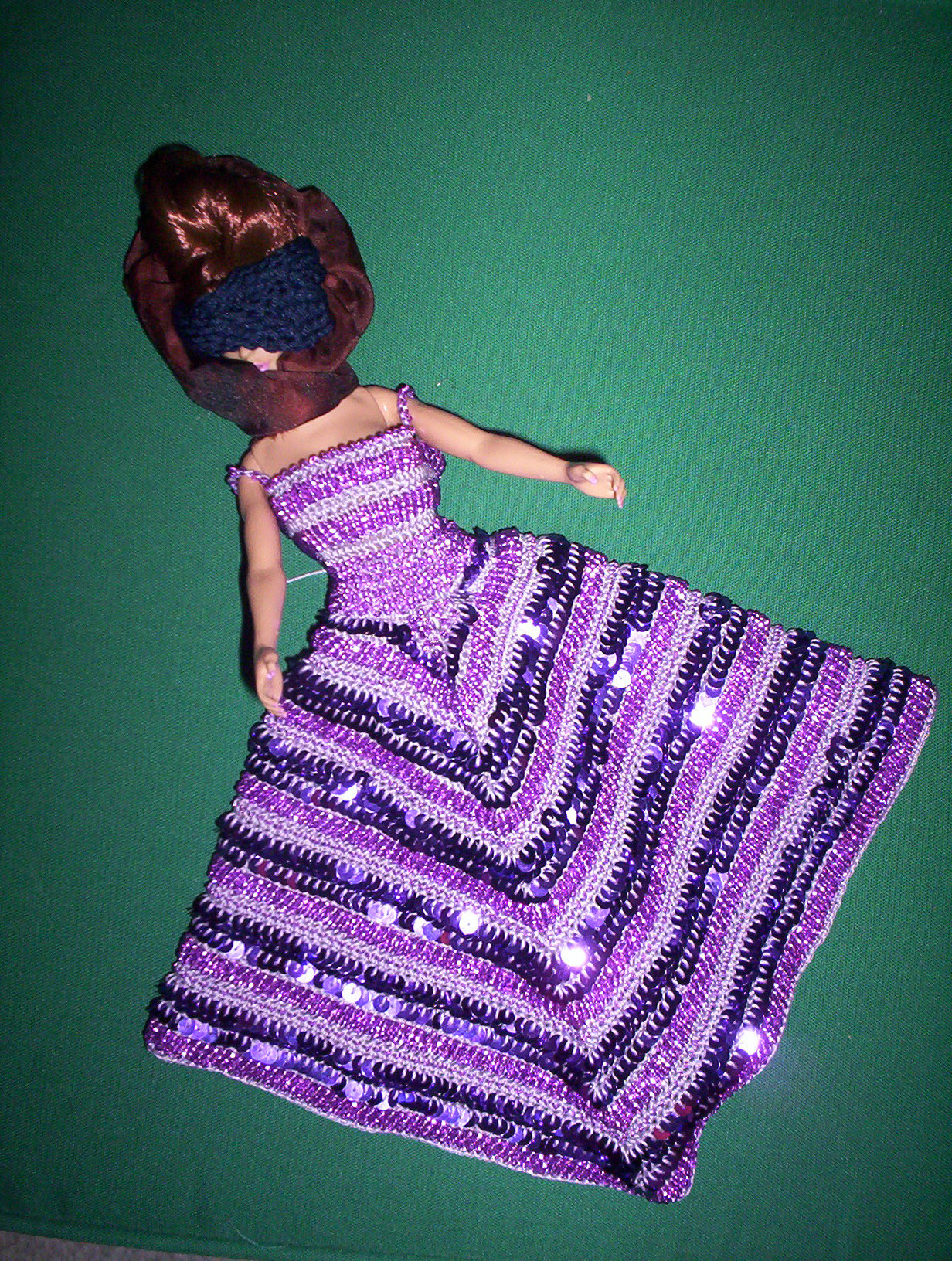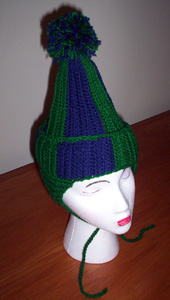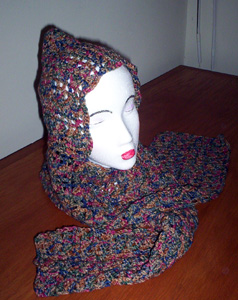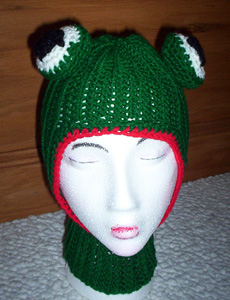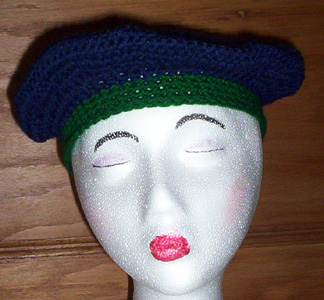This was made from the 1903 Grand Ball Gown kit from Paradise Dolls.

(click on the picture for a full sized photo)
The hair was a nightmare, as I knew it would be. In the end I covered up the mess with a lot of feathers.

Here she is from the front. Her best view is really from the side, so that’s how I have her posed on my shelf.

There were supposed to be three bows down her back but I ran out of ribbon. This is the best view of the underskirt which took a lot of effort to make but which doesn’t show all that much.
I’m so thrilled to have this done because I’ve always wanted to make one of these dresses and I’m pretty happy with the way it turned out. It’s not perfect but I think it’s beautiful.
Tips for working with beads and sequins
Crocheting with beads and sequins isn’t hard once you got the hang of it. The hardest part about working with beads is that they’ll take any opportunity to escape. You can’t just put your thread down or you’ll come back to find beads all over the floor. Believe me, I learned that lesson a few times. The kit included pre-strung beads which is supposed to make getting them onto your thread easier. It does, but it also allows you to spill hundreds of beads onto the floor at one time when the knot joining the string to your thread comes loose.
Sequins have the opposite problem. They don’t like to be separated. My fingers would go numb from trying to get just one sequin into position for the next stitch. The sequins in the kit came covered in a white powder. It felt nasty, like chalk or resin, and it hid their sparkling beauty. So I washed it off the first set. Mistake. I learned that the white powder was there to help keep the sequins from sticking to each other so tenaciously. Even with the powder, they stick, but without the powder, just try to pry one away from the pack. Fingernails come in handy here.
Another thing that came in handy was a small pair of tile cutters. You can use them to cut off the extra sequin that will inevitably end up part of your work no matter how diligently you tried to separate out just one. Of course, you want to be very careful doing that. Don’t cut the thread.
Some of the beads have abnormally small holes and as you’re moving a string onto your thread, one will catch and refuse to move over the knot. Trying to force it will result in the knot breaking and all the beads running off onto the floor. Untying the knot so you can remove the bad bead will result in your putting down one of the threads without thinking and going to pick it back up again only to realize that all of the beads have run off onto the floor. Use the tile cutters to cut that one bead in half so you can remove it from the string without untying.
Extra tension helps control the beads and sequins as you’re working. After stringing on about a mile of beads (a few inches of sequins goes a long way), push most of them way down the thread. Keep a working number of beads or sequins between your work and the hand that guides the thread. To move the next bead or sequin into place, you’ll need tension from something besides your hand. I would run the thread under my foot or between my knee and the sofa arm.
Working with beads and sequins will feel awkward and slow at first. The first row was only 36 stitches and I think it took me an hour. I didn’t think it would be possible to finish this project in my lifetime. By the end of the skirt, the rows were almost 200 stitches long and I was doing them in less time than that first row. So just keep working on it, and remember: Watch those beads!
